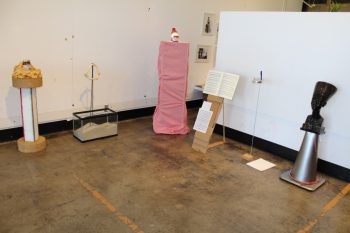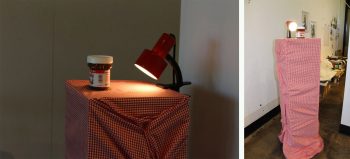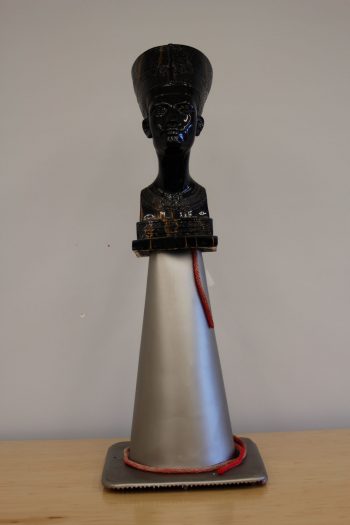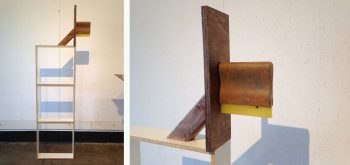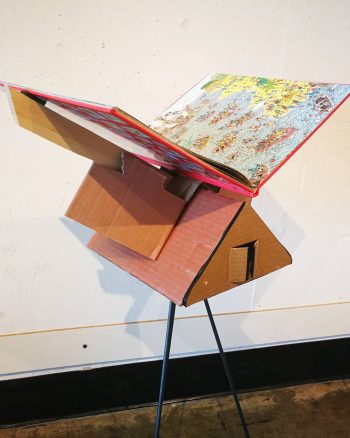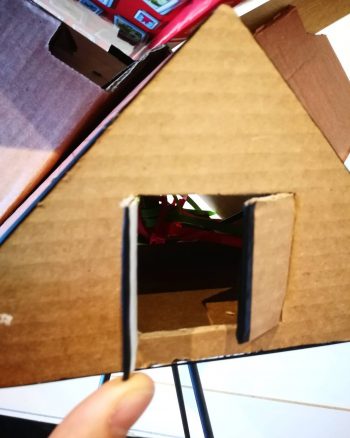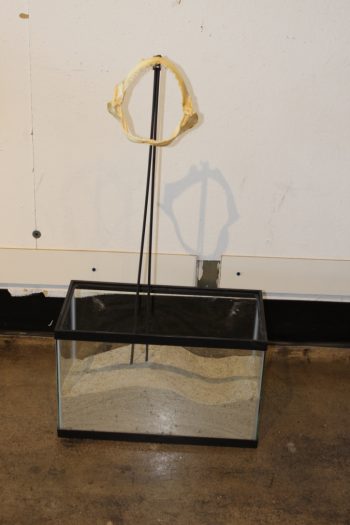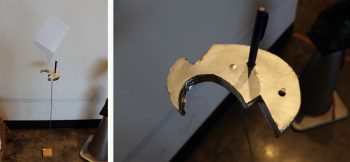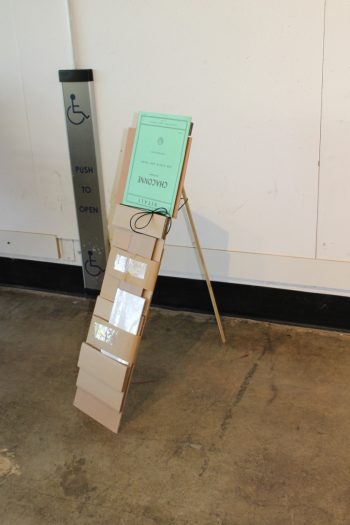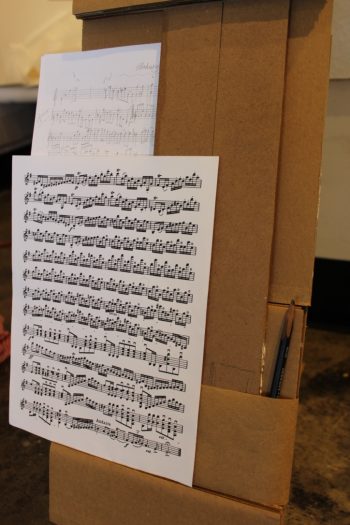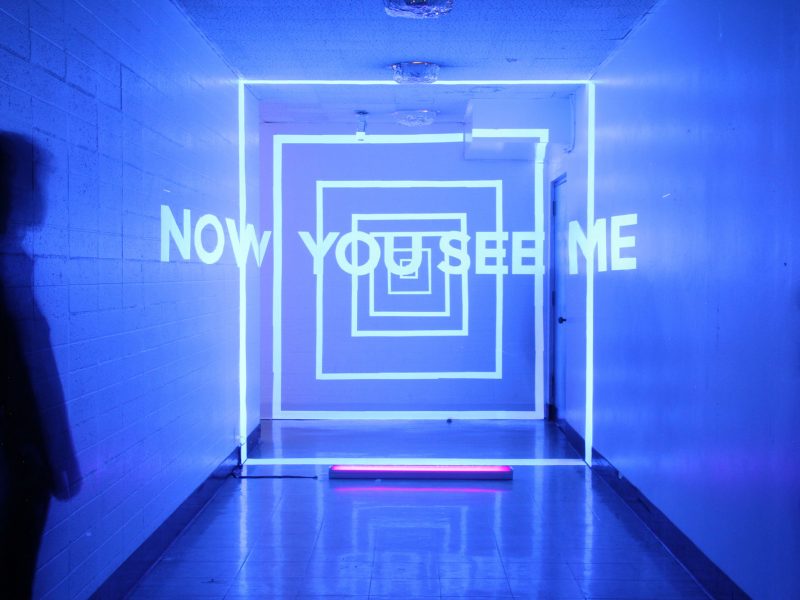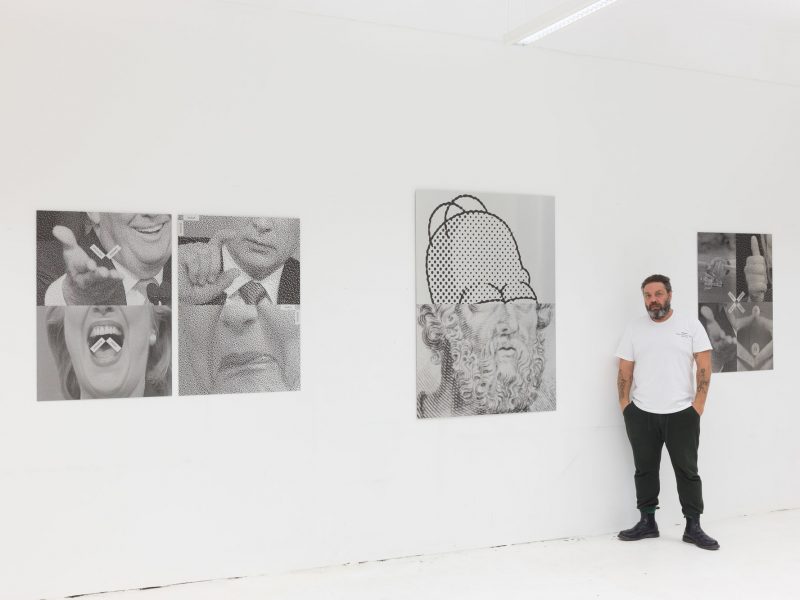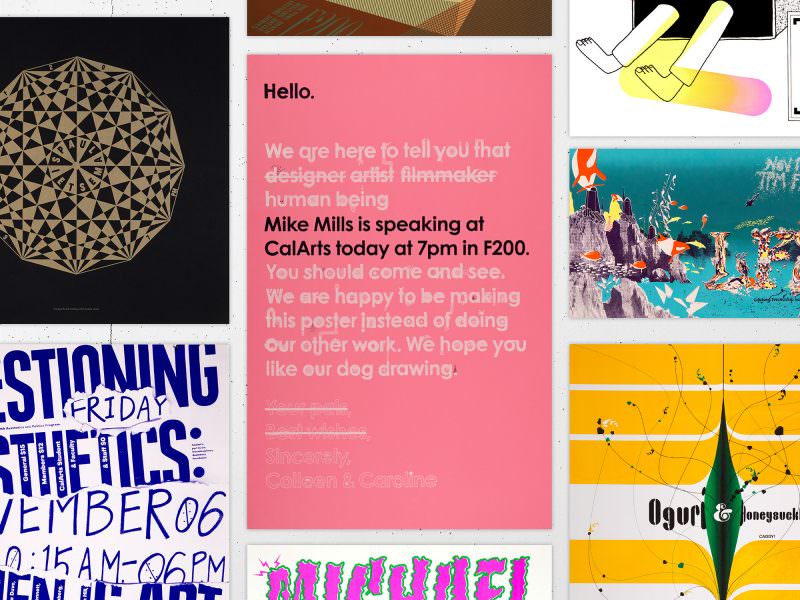The weekend of October 19th, a group of BFA and MFA students in Colin Frazer’s Visiting Designer Workshop Class gathered to participate in a workshop titled “Plat-Forming” led by Benjamin Critton and Heidi Korsavong as Norma Studio.
The workshop’s brief called to select an object of meaning and make a physical structure to support it, noting that when making the piece, the designer was to keep the concept of generosity in mind. Critton and Korsavong wrote, “Generosity comes in many forms. This could signify the simple sharing of a piece of set of information the presentation of a subjectively thought-provoking form; the exhibition of a tool that has become instrumental to your creative practice or everyday life.” The resulting works were displayed in a small exhibition in A102.
Spencer Abrams (BFA4) made a gingham pedestal on which a jar of Nutella rests entitled “Nutella Understanding Terminal (NUT).” Abrams notes “The primitive, original form of Nutella dates back to the WWII. It was a solution to the problem of dire cocoa shortages at the time, leading to a chocolatey, hazelnutty snack to sate the collective sweet teeth of the masses. Today, Nutella is not only the solution to problems, but the lubricant with which new problems are solved – by graphic designers. The Nutella Understanding Terminal (or NUT) was creates a perfect picnic scenario with which to exalt the most powerful product of human conflict, Nutella.”
Trey Brothers (BFA3) created a support structure for his Nefertiti sculpture using a metallic silver traffic cone. Brothers notes, “This replica of a Nefertiti bust was purchased from a second hand store the year I left home. It has come to signify home and a marker for my place in the world. Although any who have visited my apartment or working space in the last 7 years have definitely been presented with this object, for this exhibition I display this meaningful object in a generous manner by choosing to reveal the hollow aspect of the bust. For those who have visited my space in the past and will in the future it is my gift to share with you my cache of momentous hidden beneath the bust of Nefertiti.”
Alex Cerutti (BFA2) chose his screen printing squeegee as his object to bolster. His “Unconventional Squeegee Rack” is made up of plywood and MDF, and Cerutti describes it poetically and with whimsy: “The squeegee, it needs me – I need it. Inseparable, we are with no loose bits. It stands tall, mighty and proud, for it knows its purpose is significantly loud. The rack holds the squeegee in place for it can’t always be in a race. There it lies steady, waiting…”
Alex Cheng’s (BFA3) project “Hidden,” is a support structure for “Where’s Waldo,” a book that he notes is the “epitome of finding a singular constant object.” The structure is made of cardboard, zip ties, metal, rubberband, tape, and sealant. Cheng describes the structure as “[functioning] like any bookstand. What makes it different is that it isn’t made from much more than some sticks and cardboard found from various dumpsters around campus. The bookstand represents simple enjoyment and discovery. Available as well is an interactive door for prying or curious eyes that reveals a functional piece composed of a complex arrangement of zip ties. The bookstand is simple but has a hidden interior only for those who look.”
Nadia Haile (PMFA) constructed a platform for holding her favorite salsa and tortilla chips. Entitled “Pot o’ Gold,” Haile describes the piece as “[consisting] of a jar of Joe T Garcia’s Medium Salsa Picante perched atop a foam pillar and encased in a mound of tortilla chips. The salsa stands as the focus of the piece, as the sauce’s distinct flavors and noticeable kick make evident its superiority within the field of chip toppings. The stand’s gold base and top mirror the elegant lid of the jar, while its green and red stripes bring attention to the special border on the jar’s label. Finally, the tortilla chip hug serves to convey the snack’s intimate relationship with Joe’s saucy dip.”
Ben Macias’ (MFA3) piece, “Tiburón,” features a shark jaw resting atop two poles encased in a fish tank filled with sand. Macias notes, “The origins of this jaw start from a tiger shark that was caught off the coast of Mazatlán, Mexico. Sharks are caught for their meat and the jaws are sold at novelty shops. This was given to me as a gift from my uncle who I deeply admire. It stands on a fish tank, filled with sand, reminiscent of my times walking on the beaches of Mexico.”
Yinchen Niu (MFA2) wanted to hold up one of her favorite objects: the mechanical pencil. Using metal, foil, tape, Caran D’Ache Pencil, wood, and sticker as her materials, Niu notes, “The mechanical pencil has been one of my favorite fascinations since early childhood. I want to demonstrate the beveled, ergonomic nature to its hexagonal structure. I want the audience to use the mechanical pencil, and to experience the feel of holding it.”
Seon-ho Shin (BFA3) created an alternative version of a pre-existing structure: the music stand. By making it from wood and cardboard, it becomes a portable object. Shin notes, “The portable music stand collapses into two vertical book shelves and stacks into a music stand at the standing position. Geometry inspired from Vitali’s “Chaconne”(a series of varying sections sequencing in the slow time under the common base). The recurring geometry of rectangle serves both as the founding base and as the ornamental embellishment.”
Norma Studio is Benjamin Critton and Heidi Korsavong, a graphic designer and interior designer respectively. Most recently, the duo exhibited a collection of contemporary bookends at the 2017 Los Angeles Art Book Fair. Benjamin Critton has also designed numerous typefaces in conjunction with Colophon Foundry including Lydia, Raisonné and Value Sans.

